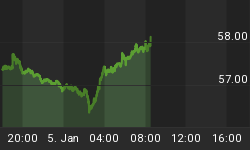The US will continue to unleash its bond-buying program, while Europe could cut rates again in the coming months. The US dollar should rise against major currencies until the middle of the year.
US: Tightening continues
After January and February, the Fed will proceed with its tapering program for an undefined period of time. The announcement was also confirmed by Mr. Williams, the president of the Federal Reserve of San Francisco, who is considered a dove. Mrs Yellen said, during the Senate Banking Committee hearing on Thursday, the Fed is watching economic data very closely. In reality, the latest economic data has been tepid in the US. As an example, in January, industrial production declined 0.3%, while manufacturing slumped 0.8%. The deterioration is confirmed by the manufacturing survey from the Federal Reserve banks of New York and Philadelphia. Jointly, the two indexes lost almost three points from January to February. Nonetheless, the employment component stayed, strong at 54.2. Perhaps, it is anticipating a rebound in the coming months. In effect, the bad weather might have played a role in the latest economic slowdown Housing starts fell 16% in December and are now at the lowest level since 2011, on the year-to-year basis.
ECB: Cutting or not cutting>
The ECB is one of the few central banks that have room to cut interest rates from 0.25% to 0.10%. Will the ECB do it? The economy in Europe is picking up, but there is no evidence of acceleration yet. In February, the composite PMI, which mirrors the GDP, was almost 53 for the eurozone. Manufacturing is beginning to perform well. Good numbers in business expectations and new orders seem to anticipate further growth. Germany is, once more, leading the way. Its economy is close to showing signs of expansion. In the last quarter of 2013, exports rose 2.6% compared to the previous quarter, while business confidence is at the highest of the past 2.5 years. Nevertheless, employment stays subdued in the whole eurozone and inflation is mild. In January, the Eurozone's inflation rate fell to 0.7%. If the ECB does not act shortly, it will fuel speculations that rates will soon be increased. This should support the value of the euro, contracting exports and putting prices under a renewed downside pressure.
Seasonal and technical components appear to anticipate an increase of the March US dollar index toward 81.60/82.30 by mid-year.















